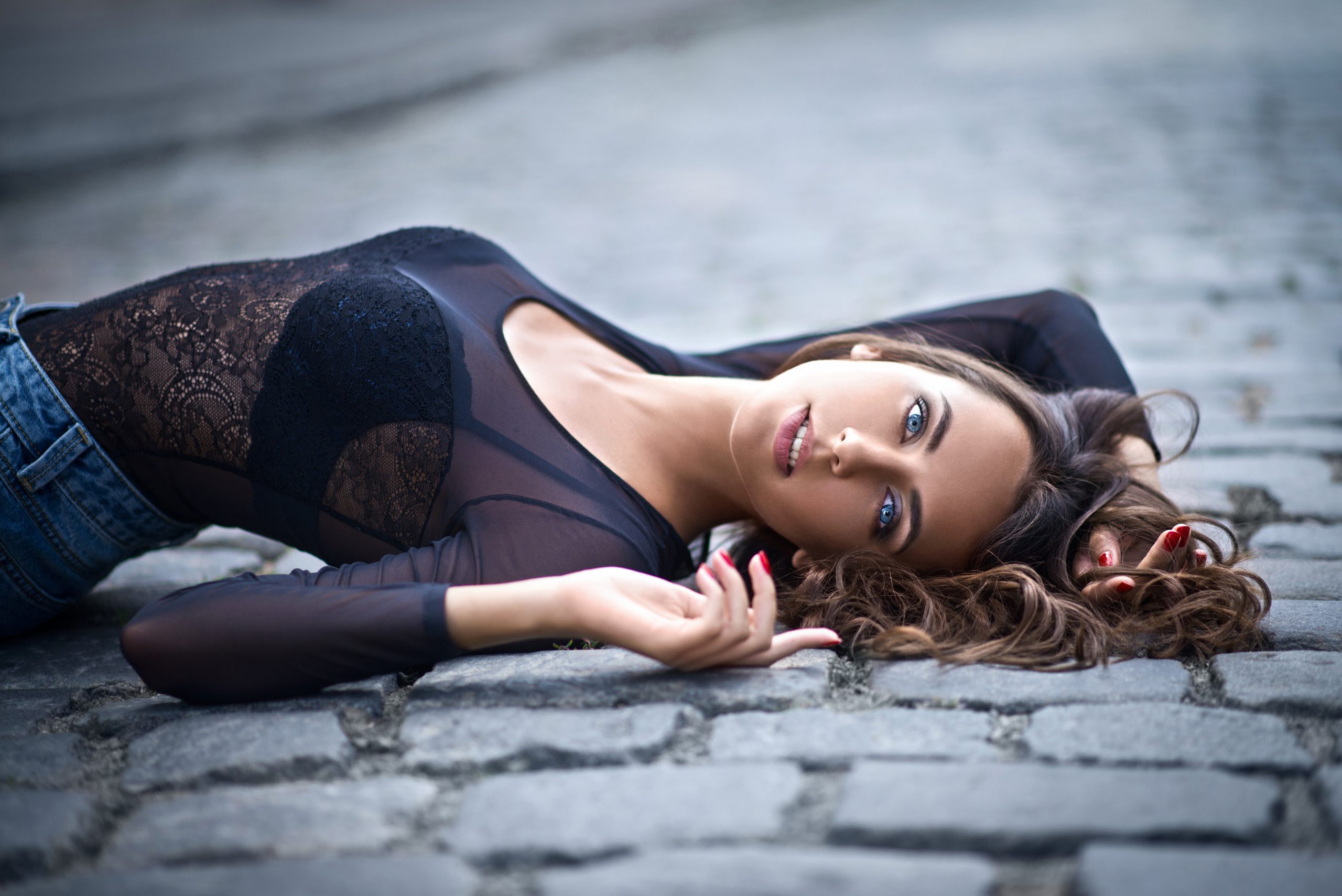
Since he first arrived on the movie scene in 1978 with “Stony Island,” his charming directorial debut about a couple of friends trying to form an R&B band, Andrew Davis has been one of the great cinematic chroniclers of the city of Chicago, featuring it in such films as the underrated Chuck Norris cop drama “Code of Silence” (1985), “Above the Law” (1988), “The Package” (1989) and “Chain Reaction” (1996). His most notable use of the city was in the film that would go on to become the biggest film of his career, his screen adaptation of the hit TV series “The Fugitive,” featuring Harrison Ford as a man wrongly accused of murdering his wife who escapes from custody to track down the real one-armed killer and Tommy Lee Jones as the federal Marshall determined to recapture him. Released in the summer of 1993, the film exceeded all expectations and wound up hitting the trifecta of acceptance: it was an enormous hit at the box office, received rave reviews, and received seven Oscar nominations, including a Best Picture nod and a win for Jones for Best Supporting Actor.
“The Fugitive” has now been reissued on home video with a new 4K disc that includes an introduction by Davis and Ford, a commentary by Davis and Jones, and documentaries on the making of the film and the execution of the spectacular train wreck sequence that is arguably the film’s most sensational sequence. To promote the release, Davis sat down with me to discuss the film’s legacy and why it still packs a punch 30 years later.
As we are talking, your most successful film, “The Fugitive,” is celebrating its 30th anniversary with a brand-new 4K disc, and you are also about to commemorate the 45th anniversary of your first feature, “Stony Island,” by hosting a screening of it at the Siskel Center. What has it been like for you to be looking back and reminiscing about those two achievements?
Pretty amazing, isn’t it? “Stony Island” was my first film, and it is like my first child. Roger gave it wonderful reviews, and I was very grateful to him. You know that I went to college with Roger. He would come out of the foreign film theater on Sunday night, and he would talk with the other graduate students about what he thought of these films, and we would listen to him. He was the editor of The Daily Illini at the time, and then later on, he started liking my movies. We shared a lot, having been in Champaign at the same time in the ’60s with the anti-war movement and the civil rights movement. He got his job as a critic through a publicist at Warner Brothers, who recommended him to somebody at the Sun-Times.

With “The Fugitive,” how familiar were you with the original TV series before signing on to do the film? Was it something that you watched when it was originally on?
No. I was aware that it was a big hit, but Harrison, Tommy, and I were not watching “The Fugitive” in the Sixties. We were doing other things. I was very aware that it was a huge hit, and I thought that I just had to take the basic spine of that story and figure out how to make it into a standalone thriller. We had to come up with an entirely new plot because the original script that was given to me didn’t have any of the stuff about the drug protocol or the tension about the pharmaceutical company—that came from my sister recommending to me how to fix it through a young resident at Cedars-Sinai. It was a question of how to take a basic Les Miserables story and turn it into a compelling thriller.
Your previous film was “Under Siege,” the Steven Seagal action epic that was a big hit for Warner Brothers in the fall of 1992. Had you already agreed to make “The Fugitive” before that one came out, or did the offer come afterward?
At the premiere of “Under Siege,” Arnold Kopelson, who was one of the producers, came up to me and said, “I think I know your next movie,” and I didn’t know what he was talking about. Then I got a call that Sunday night from Bruce Berman, the head of the studio, congratulating me and telling me that Harrison had seen “Under Siege” in Jackson Hole, Wyoming, and wanted to talk to me about doing “The Fugitive.” They sent me the script, and I was a little lost because I didn’t think that it made any sense—Tommy Lee Jones had hired the one-armed man because Harrison screwed up on Tommy’s wife in the operating room. I had to come up with a better solution because I had the biggest movie star and a studio supporting us because of the success of “Under Siege.”

Considering both that script overhaul and the enormous size of the production, it is amazing that the time from when you came on to the film to its release was only about ten months.
It was the same crew that had done “Under Siege,” and there were a lot of Chicago guys and gals. We went right from Mobile, Alabama, back to Chicago and started making “The Fugitive.” It was a group of people who liked each other, cared about each other, and could work together well.
One of the things that is most striking about your action films, particularly “The Fugitive” and “Code of Silence,” is that even though they are both action-packed spectacles, there is a sense of realism to them that is relatively rare for the genre as a whole. For example, there’s the moment in “The Fugitive” where someone’s hearing is temporarily damaged as the result of being too close to a gun as it goes off—that is the kind of detail that you rarely see in this type of film.
I think there is a theme to my work in films like this, and that is a sense of heightened reality. You want to keep it real because it is more compelling. Now, you see these fight sequences that go on for 20 minutes, and people are bashing each other, and it isn’t entertaining at all—how long can you watch someone pounding on someone and have it be worthwhile as a human being? I just try to keep it real and move on to the next beat of the story.
Another thing that is striking about your films—especially in the case of “The Fugitive”—is your incredibly effective use of Chicago locations. Unlike a lot of the films that are shot here, which tend to be concerned with showing the most superficially pretty visuals imaginable, it has a genuine feel for the city and its neighborhoods that comes from someone who knows the place well.
It goes back to being a kid growing up in Chicago and starting to take pictures when I was eight years old. Roger Ebert referred many times to the fact that I understood the city quite well. He had an article in Chicago Magazine about who would make the perfect Chicago movie—David Mamet would write it, Haskell Wexler would shoot it, Quincy Jones would do the music, and I would direct it. Roger always talked about how my use of locations as an honest look at the city was part of what I wanted to do. If you look at “Stoney Island,” there is a lot of fabric in that movie that is related to “The Fugitive,” “Above the Law,” “Code of Silence,” “Chain Reaction,” and “The Package.” All the films have the grit of the neighborhoods and real places.

I think everyone who talks to you about “The Fugitive” asks how the legendary train derailment sequence was done, so I won’t bother with it. Instead, I’m more curious about a sequence that’s almost as astonishing—the St. Patrick’s Day parade scene in which you have Harrison Ford being pursued by Tommy Lee Jones through the crowds that you shot as the actual parade was going on. Considering how chaotic that parade can be under normal circumstances, what was it like to then add a film crew and two huge movie stars into that mix, especially since I am to understand that little of the scene had been scripted out beforehand?
I owe Haskell Wexler the tribute to why and how I did that. Haskell always liked to use real events as a backdrop, and “Medium Cool” was a film that I worked on with him after leaving Champaign. We only had about four or five people walking through that parade, and everyone was pretty much invisible. Nobody recognized Harrison at all—he was walking with the plumbers with a hat he picked out of a garbage can. With Tommy, we just went through with a Steadicam and a couple of other cameras sitting on the side and made it come alive. It was fun and wonderful to get close to those big drums, the cymbals, and the bagpipes. Afterward, we got to go to one of the Irish bars at the Hilton and have a few drinks. It was great.
Was it difficult to get permission to be allowed to shoot the sequence?
We got permission from the plumbers and permission from the city—Daley is even in the movie. We didn’t interfere with anyone, and I had done these other movies that the city was proud of in bringing jobs to the city, so they were very cooperative.
This was the first time you had worked with Harrison Ford, but you had collaborated with Tommy Lee Jones previously on “The Package” and “Under Siege.” What was your working relationship with them like, and what were the challenges of making a film that featured two top stars heading the cast who, because of the nature of the screenplay, only shared the screen for a couple of scenes?
Harrison was wonderful to work with. He is very smart, he’s a team player, and he cares about everyone on the set. He knows what everybody’s job is, and he is very supportive. Tommy is the same way. People are afraid of Tommy because he is crusty, and he doesn’t tolerate people that he doesn’t think are contributing or who ask stupid questions. He is a very creative guy, and he brought so much to it, as did Harrison.

When “The Fugitive” came out, it received the kind of response that few films achieve, especially those in the action genre—it was a huge box-office hit, received rave reviews from the critics, and was nominated for a number of Academy Awards, including the one won by Tommy Lee Jones for Best Supporting Actor. Was there a particular point where you began to realize that the film had gone from being just another run-of-the-mill hit to becoming a legitimate phenomenon?
I think it was the most successful reality-based film that Warner Brothers had done to that point—it wasn’t “Batman” or something filled with special effects. I just kept hearing from people that it was playing in theaters all over the world and that people loved it. It became like General Motors—everybody knew about it. I think I was very lucky to be in the right place at the right time, having made “Under Siege,” having Harrison appreciate what that represented and taking a chance on a director who hadn’t done a movie of this size before. And working so closely with the cast to create a palate, style, and atmosphere that had this kind of humor and tension.
What is it about the film that you believe is the reason it not only became such a big hit when it came out but continues to resonate with viewers 30 years after?
You care a lot about the characters. You care about Harrison. You care about Tommy and whether he is going to kill this poor guy who is innocent or what he is going to do with him if he does something wrong. It becomes a mystery in finding out what really happened because it doesn’t make sense that this doctor is helping innocent people and saving their lives while putting himself in danger in order to prove his innocence, so you have great empathy for him. The style and the pace of the movie, especially with the score and the editing, are such that it keeps moving, but it isn’t cut so fast that you can’t keep up or become nauseous as some films do. The rhythms of the film and the score are also critical as to why it is successful, and that is a tribute to Dennis Virkler, Don Brochu, and Dov Hoenig, who were my three major editors, and James Newton Howard, who wrote the score.
Click here to get your copy of “The Fugitive” on 4K Ultra HD.




